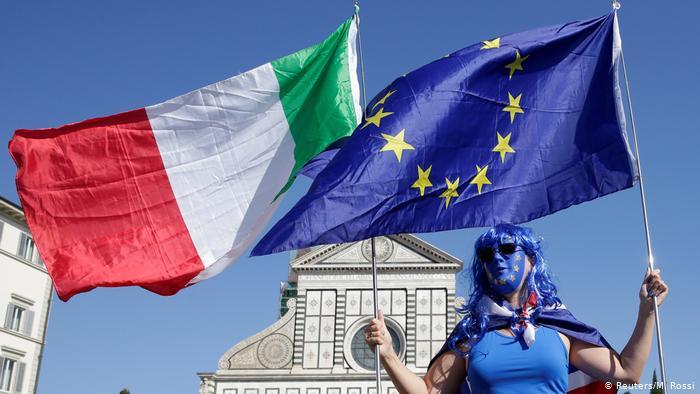Authored by Don Quijones via WolfStreet.com,
Italy’s fiscal health is once again in serious decline…
Last week, Italy’s coalition government slashed its growth forecast for the Italian economy in 2019 to 0.2% – the weakest forecast in the Eurozone – from a previous forecast of 1%. Italy is already in a technical recession after chalking up two straight quarters of negative GDP growth in the second half of 2018.
The government’s budget for this year was based on the assumption that the economy would expand by 1% this year. Now, it seems the economy may not grow at all; it could even shrink.
One direct result of this is that Italy’s current account deficit for 2019 will be substantially higher than the 2.04% of GDP Italy’s government pledged to stick to late last year. And that can mean only thing: another standoff between Rome and Brussels over the direction of fiscal policy is in the offing.
Italy already boasts the largest public debt pile in Europe in nominal terms, clocking in at €2.14 trillion, as well as the second largest in relative terms after Greece’s twice bailed out economy. Rome just forecast that public debt would hit a new record high of 132.6% of GDP this year. That record is unlikely to last very long given Italy’s stagnating economy and the government’s determination to cut taxes, reduce the retirement age and introduce a citizens’ basic income.
The biggest problem with Italy’s economy is that many of its problems are chronic and deep seated. Many of them date back to the adoption of the euro, in 2000, or in the case of Rome’s massive addiction to public debt, to the 1980s. As the OECD points out, real GDP in Italy is still well below its pre-crisis peak. Italy is also the only OECD country where incomes (as measured by GDP per capita) are no higher than in 2000. By contrast, in France, Spain, the UK and Germany they have risen during the same period by 13%, 17%, 21% and 23 respectively.
The IMF now envisages Italy’s public debt ratio ratcheting up to 134.4% of GDP in 2020 to 138.5% in 2024. As the debt increases, so too will the interest payments on the debt. That is unsustainable, especially with much of that debt scheduled to fall due in the next few years. In 2019 alone, Italy has an eye-watering €250 billion of bond redemptions to fund, which is roughly the equivalent of all Eurozone bond maturities this year.
And now Rome doesn’t even have the ECB to rely on to buy up over half of the bonds it issues. Of course, in these yield-starved times investors will gobble up higher yielding Italian bonds, at least for a while. But a risk that those yields will climb too high, at which point bond vigilantes will take matters into their own hands, as happened in 2012 when the yields on Italy’s 10-year bonds soared to 7%.
Before that happens again, something will have to give. If Italy had its own currency and were in control of its own monetary policy, it could try to inflate the debt away — whatever that might do to its own currency. But it isn’t and it can’t. Alternatively, it could, like Greece, default on its debt, with dire consequences for holders of that debt, including Italian households and domestic and foreign banks.
The one other option open to Rome is one that has also already been tried, with limited success, by Greece — i.e., to slash public spending, hike taxes, privatize public assets, squeeze the informal economy, and impose a harsh austerity regime. This is the path recommended by the OECD, but it would virtually guarantee electoral suicide for Italy’s coalition government partners which will do whatever they can to avoid alienating the very voters who gave them their first real taste of power.
In other words, none of these classic solutions are realistic options for a country as big and as systemically important as Italy. That the country is now being run by two relatively nascent anti-austerity parties that are not wholly enamored with the European project and as such are willing to face down diktats from Brussels, at least up to a point, further heightens the risk of conditions spiraling out of control.
Italy is home to an extremely fragile financial sector with the highest NPL ratio and lowest return on assets of any of the major European economies. The French government has already warned that an economic recession in Italy could pose as great a risk, if not greater, to the EU than Brexit.
And it makes sense for the French government to be worried. The economies of both Italy and France are tightly interwoven, with annual trade flows of around €90 billion. More important still, French banks are, by a long shot, the largest foreign owners of Italian public and private debt, with total holdings of €311 billion as of the 3rd quarter of 2018, according to the Bank for International Settlements. If Italy defaulted, French banks would take an almighty hit to their balance sheets.
via ZeroHedge News http://bit.ly/2v5vfQa Tyler Durden
